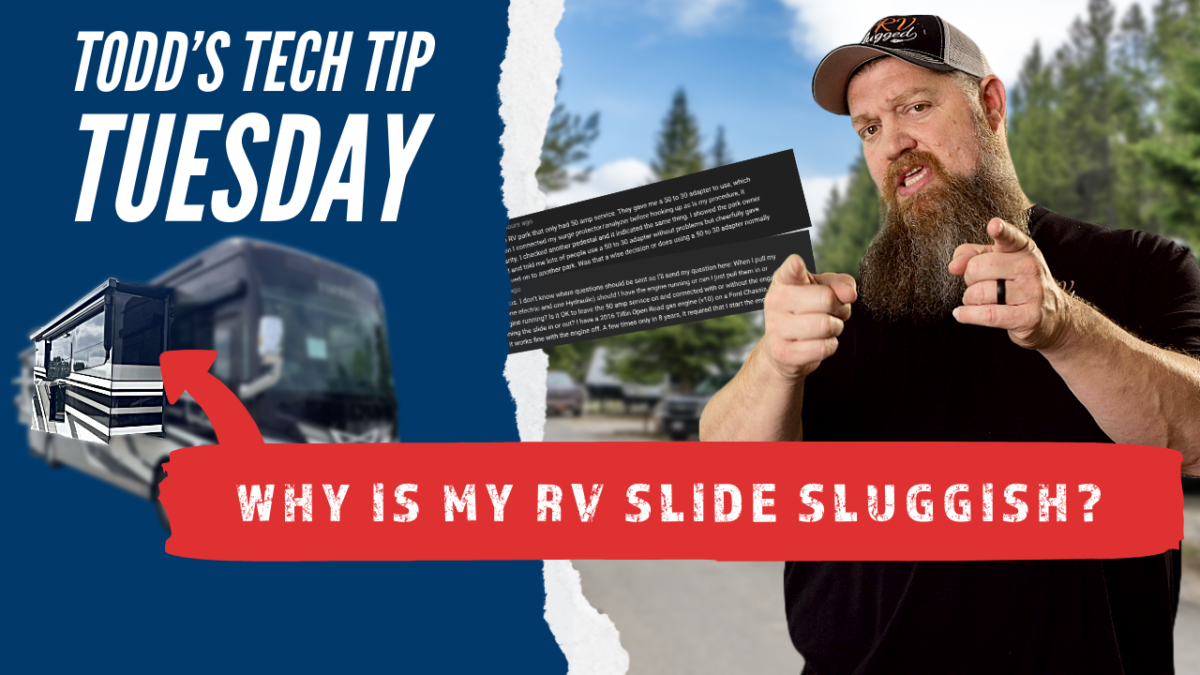Welcome back to another episode of Todd’s Two-Minute Tech Tip Tuesday, brought to you by the National RV Training Academy—the largest hands-on RV training academy in America.
Dealing with 50 to 30 Amp Adapters and Reverse Polarity
Question 1: Reverse Polarity with a 50 to 30 Amp Adapter
A viewer recently shared an experience at an RV park that only offered 50 amp service. They were given a 50 to 30 amp adapter for their 30 amp RV. Upon connecting their surge protector analyzer, it indicated reverse polarity. Checking another pedestal showed the same result. The park owner was perplexed, as others used the adapter without problems. The viewer wisely chose to move to another park. Was this the right decision?
Understanding 50 to 30 Amp Adapters
- 50 Amp Service: Has two hot legs, one neutral, and one ground.
- 30 Amp Service: Has one hot leg, one neutral, and one ground.
- Adapter Function: The adapter abandons the second hot leg, connecting one hot leg, one neutral, and one ground to your RV.
Reverse Polarity Issue
- Analyzer Role: Your analyzer is designed to detect problems, and it correctly indicated a reverse polarity issue.
- Potential Hazards: Ignoring reverse polarity can lead to electrical hazards, so it was wise to follow the analyzer’s warning and move to a safer park.
Final Thoughts
- Park Owner Responsibility: It’s crucial for park owners to ensure their electrical setups are safe and correctly wired.
- Analyzer Value: Always trust your analyzer—it’s there to protect your RV and your safety.
Operating Slides: Engine On or Off?
Question 2: Running Slides In or Out with Engine Running
Zenzo asked if it’s better to run slides in or out with the engine running or if it’s okay to do so with just the 50 amp service connected. Zenzo’s RV has both electric and hydraulic slides, and occasionally requires the engine to be running.
Understanding Slide Operation
- Power Source: Slides, whether hydraulic or electric, operate on 12 volts and draw significant power.
- Battery Load: The heavy load from the slides can drain the battery quickly.
Engine Running Benefits
- Alternator Assistance: When the engine is running, the alternator helps maintain battery charge, providing additional power for heavy loads.
- Slide Performance: Keeping the engine running ensures smoother operation of slides and leveling gear, especially for larger motor coaches.
Specific Advice for Motor Coaches
- Manual Check: Always consult your RV’s manual for specific instructions, as different manufacturers may have unique recommendations.
- Power Coordination: For motor coaches, running the engine helps the alternator assist with the load. For towables, use the power cord and converter to support the battery.
Conclusion
Both questions highlight the importance of proper electrical practices and understanding your RV’s power needs. Whether you’re dealing with a power adapter issue or figuring out the best way to operate your slides, always prioritize safety and efficiency.

